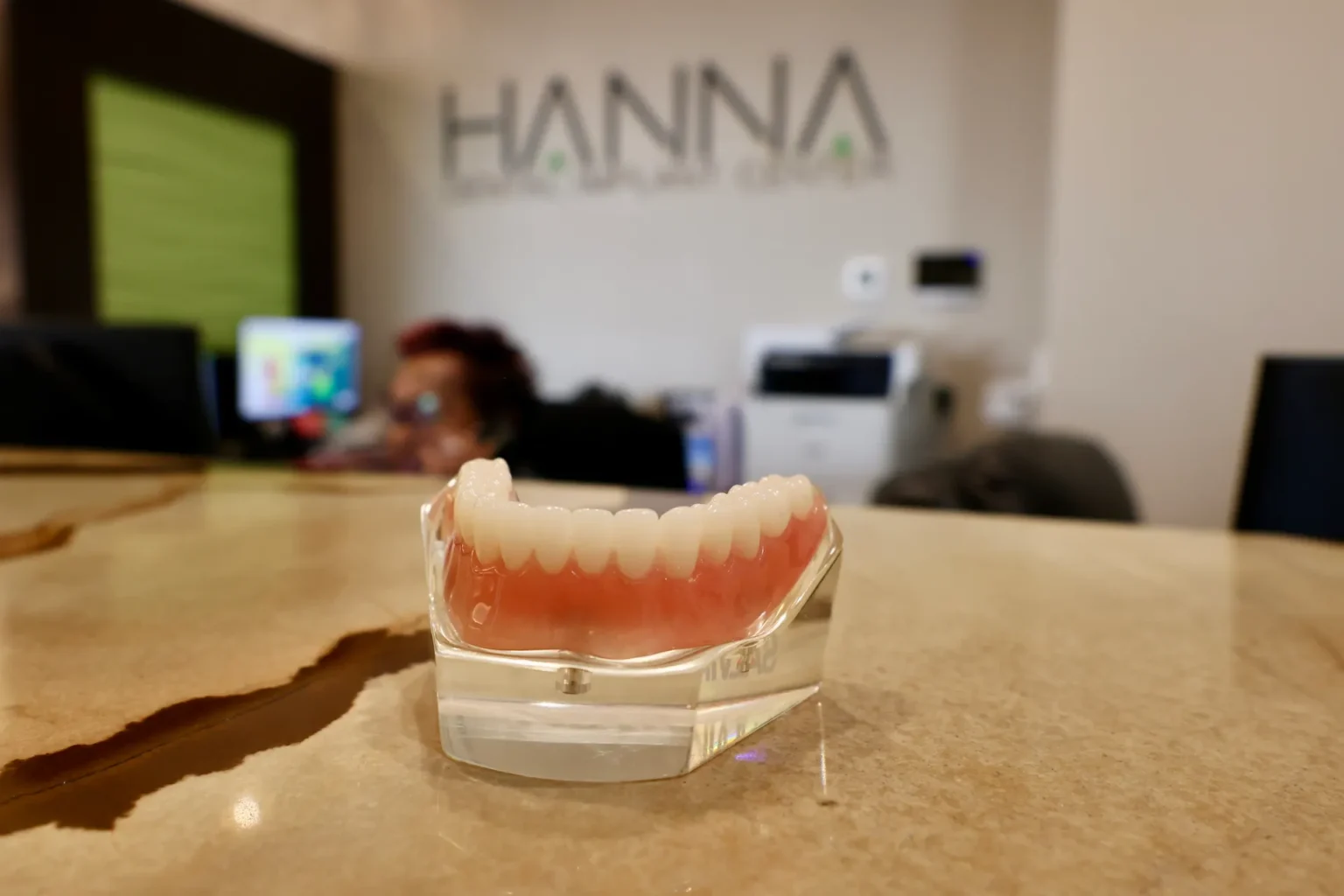The Full-on Five procedure is revolutionizing the way we approach dental implants. This innovative technique offers a promising solution for individuals seeking a comprehensive and long-lasting solution to tooth loss.
In this article, we’ll answer the question: What is the full-on-five procedure? We will also provide a clear understanding of how they work. We’ll walk you through the essentials of this procedure, highlighting its benefits, success rates, and the steps involved.
What is the Full-On-Five Procedure: Step-by-Step Process
The Full-On-5 dental implant procedure is a streamlined approach to restoring a full set of teeth. It typically involves the following steps:
- Initial Assessment: A dental professional thoroughly examines your mouth, including X-rays or 3D scans, to determine your suitability for the procedure.
- Treatment Planning: A customized treatment plan is devised based on the initial assessment. This plan includes the implants’ placement and the prosthetic teeth’ design.
- Implant Surgery: During the surgery, five dental implants are strategically placed in your jawbone. These implants act as anchors for the new teeth.
- Healing and Integration: After the surgery, a healing period is required. During this time, the implants fuse with the jawbone. This process, called osseointegration, provides a stable foundation for the new teeth.
- Placement of Prosthetics: Once the implants have been integrated, prosthetic teeth are attached, giving you a full set of functional, natural-looking teeth.
Benefits and Success Rates of Full-on-5 Dental Implants
As with all other dental implants, the Full-on-5 implants have a success rate of 97.1% and the following benefits:
- Improved Oral Health: Unlike traditional dentures, Full-On-5 implants don’t require reducing other teeth, meaning some of your natural teeth are left intact.
- Comfort and Convenience: These implants feel and function like your own teeth. They offer stability and comfort without the need for adhesives.
- Aesthetic Appeal: They provide a more natural appearance, enhancing your smile and facial structure.
Each step in the Full-On-5 procedure plays a vital role in the overall success and longevity of the treatment, offering a life-changing solution for those who have experienced significant tooth loss.
Candidates for Full-On-5 Dental Implants
Not everyone is a suitable candidate for the Full-On-5 dental implant procedure. The ideal candidate typically has:
- Sufficient Jawbone Density: A certain amount of jawbone is necessary to support the implants. A successful implant ideally requires at least 1 mm of bone surrounding each implant.
- Good Oral Health: Healthy gums and a mouth free of periodontal disease are essential.
- Overall Health: Good general health is important, as some medical conditions can affect the success of the implants.
Your dental history and current oral health also play a significant role in determining your eligibility. For instance:
- Those who have lost multiple teeth due to injury or decay may find this procedure particularly beneficial.
- Patients currently using dentures might consider Full-On-5 a more stable and permanent solution.
- Issues like gum disease must be addressed before proceeding with the implants.
Evaluation Process
The evaluation process for Full-On-5 implants typically involves:
- A comprehensive check of your teeth, gums, and jawbone.
- Discussion of your overall health and any medications you are taking.
- X-rays or CT scans to assess bone quality and plan the implant placement.
This thorough evaluation ensures that the Full-On-5 procedure is suitable and safe for you, tailored to your dental needs.
Preparing for the Full-On-5 Procedure
The first step in preparing for the Full-On-5 procedure is a detailed consultation with your dental specialist. This session is key to understanding your individual needs and expectations. During the consultation, your dentist will:
- Discuss the procedure in detail, including what to expect before, during, and after the surgery.
- Create a personalized treatment plan, taking into account the current state of your oral health and the desired outcome.
Once you are deemed a suitable candidate, you’ll receive specific pre-operative instructions. These might include:
- What to eat and avoid before the surgery.
- How to maintain oral health leading up to the procedure.
- Instructions regarding current medications or any new prescriptions related to the surgery.
Your comfort and safety during the procedure are paramount. Discuss with your dentist the available sedation options, which may include:
- Local anesthesia to numb the area where the surgery will take place.
- Sedatives to help you relax during the procedure.
- General anesthesia, in some cases, you might be put to sleep during the surgery.
Your dentist will also guide you on how to manage anxiety or discomfort before and during the procedure, ensuring your experience is as comfortable and stress-free as possible.
The Full-On-5 Surgery Day
On the day of your Full-On-5 surgery, the first step is administering anesthesia. This is crucial to ensure you feel no pain during the procedure. Your dental team will have already determined the best type of anesthesia for you based on your health, preferences, and the specifics of the procedure. This could range from local anesthesia, which numbs the mouth area, to general anesthesia, where you’ll be asleep during the surgery.
Implant Placement and Integration Process
Once the anesthesia takes effect, your dentist or oral surgeon will begin the procedure. Here’s what happens during this stage:
Your dentist will make small incisions in your gum to expose the jawbone. Then, they carefully place five dental implants in predetermined positions.
After placing the implants, they’re left to integrate with the bone, a process known as osseointegration. This is critical for providing a stable base for your new teeth.
Temporary Restoration Placement
In many cases, temporary teeth may be placed on the same day as your surgery. These temporary restorations allow you to have functional teeth while your mouth heals and the implants bond with your jawbone. They are not your final teeth, but they are designed to look natural and help you eat and speak comfortably during the healing process.
The Full-On-5 surgery is a significant step towards restoring your smile and oral function. Throughout this process, your dental team will focus on ensuring precision and comfort, setting the stage for a successful outcome with your new dental implants.
Post-Operative Care and Recovery
After your Full-On-5 surgery, regular follow-up appointments are crucial. These visits allow your dentist to monitor your healing and ensure the implants integrate properly. During these appointments, your dentist will:
- Check the condition of your gums and the implants.
- Make any necessary adjustments to your temporary teeth.
- Guide the next steps in your treatment plan.
Adhering to specific post-operative instructions is important to ensure a smooth recovery following your surgery. These include:
- Stick to soft foods and avoid anything hard, chewy, or too hot or cold for the first few days.
- Maintain a gentle but thorough oral hygiene routine to keep the implant sites clean.
- Limit physical activity for a short period to reduce the risk of bleeding or swelling.
Managing Discomfort and Potential Complications
Some discomfort and swelling after surgery are normal. Your dentist might prescribe medication to manage pain and prevent infection. They will also advise you on signs to watch for, such as excessive bleeding or signs of infection, and when to seek immediate care.
Proper post-operative care is essential for your comfort and the success of your Full-On-5 implants. Following your dentist’s instructions and attending all follow-up appointments, you can help ensure a smooth recovery and the long-term success of your new smile.
Final Restoration and Long-Term Results
After your Full-On-5 implants have fully integrated with your jawbone, a process typically taking a few months, you’ll be ready for the final phase. This involves replacing your temporary teeth with permanent restorations.
These permanent teeth are custom-made to match the color, shape, and size of your natural teeth, providing a seamless and natural look. Transitioning from temporary to permanent teeth marks a significant milestone in your journey to a restored smile.
Maintaining Oral Hygiene and Prosthetic Care After Full-on-5
Good oral hygiene is vital for the longevity of your Full-On-5 implants. Just like natural teeth, your implants require regular brushing, flossing, and dental check-ups.
Your dentist will provide specific care instructions for your new teeth. This routine care not only helps maintain the aesthetic appeal of your implants but also prevents potential issues, such as gum disease, which can affect the longevity of the implants.
Lifelong Benefits of Full-on-5 Dental Implants
The Full-On-5 procedure offers numerous long-term benefits, including:
- Improved oral function
- Enhanced appearance
- Increased self-confidence
Many patients report a significant improvement in their quality of life, from being able to eat their favorite foods to smiling without hesitation. Investing in Full-On-5 dental implants is not just about improving your smile; it’s about enhancing your overall quality of life for years.
Cost, Insurance, and Financing Options for Full-on-5
Investing in Full-On-5 dental implants is a significant decision due to the cost involved. The cost typically ranges from $24,000 to $50,000 for a complete set, and the exact cost can vary depending on factors like your geographical location, the materials used, and the specific needs of your dental case.
While it’s true that Full-On-5 can be more expensive upfront compared to other dental procedures, it’s important to consider their long-term value and the quality of life improvements they offer.
Insurance Coverage and Limitations
Dental insurance coverage for Full-On-5 implants can vary greatly. Some insurance plans may cover a portion of the cost, while others might not cover implants at all. Reviewing your dental insurance policy and speaking with your insurance provider to understand what is and isn’t covered is important. Remember that even if the implants aren’t covered, related aspects of the procedure, like consultations or follow-up care, might be.
Financing and Payment Plans
Recognizing the financial challenge that Full-On-5 implants can pose, many dental clinics like Hanna Dental Implant Center offer financing options or payment plans. These plans can make the procedure more accessible by allowing you to pay for your implants over time rather than all at once. It’s worth exploring these options during your consultation to find a solution that fits your budget.
When considering Full-On-5 dental implants, balancing the cost with their potentially life-changing benefits is important.
Embrace a New Smile With Full-On- Five Implants at Hanna Dental Implant Center
The Full-On-5 dental implant procedure in Houston is a significant advancement in dental technology, offering a durable and aesthetically pleasing solution for those looking to restore their smile. This comprehensive treatment enhances your appearance, improving your oral health and quality of life.
If you’re contemplating whether Full-On-5 is the right choice for you or if you have any questions, a dental professional can provide the guidance you need. This step could be the key to achieving the confident, comfortable smile you’ve hoped for.
Ready to take the next step towards a happier, healthier smile? Contact us to schedule your consultation today. Your new smile is waiting.
Frequently Asked Questions
What is the difference between All-on-4 and Full-on-5?
The primary difference between All-on-4 and Full-on-5 dental implants is the number of implants used. All-on-4 uses four implants to support a full set of replacement teeth, while Full-on-5 uses five. This extra implant in the Full-on-5 procedure can provide additional support, which may benefit patients with specific dental needs or bone density issues.
What is the All-on-4 process?
The All-on-4 process involves placing four dental implants in the jaw, onto which a full arch of teeth is mounted. These implants are positioned to maximize the use of available jawbone, often eliminating the need for bone grafting. The process aims to provide a stable and long-lasting foundation for replacement teeth, improving both function and aesthetics.
How much does a full-mouth implant cost?
The cost of a full-mouth dental implant can vary widely depending on several factors, including the type of implant system used, the location of the dental practice, the specific needs of the patient, and whether additional procedures (like bone grafting) are needed. The average cost can range from $24,000-$50,000. It’s best to consult with a dental professional for a precise estimate based on your circumstances.
What is the cheapest way to replace a tooth?
The most affordable option for tooth replacement is typically a removable partial denture. This option is less invasive and doesn’t require surgery like dental implants. However, it’s important to consider factors like comfort, functionality, and long-term oral health when choosing a tooth replacement option. Dental bridges and traditional dentures are other cost-effective alternatives, though they may have different implications for oral health and lifestyle.



